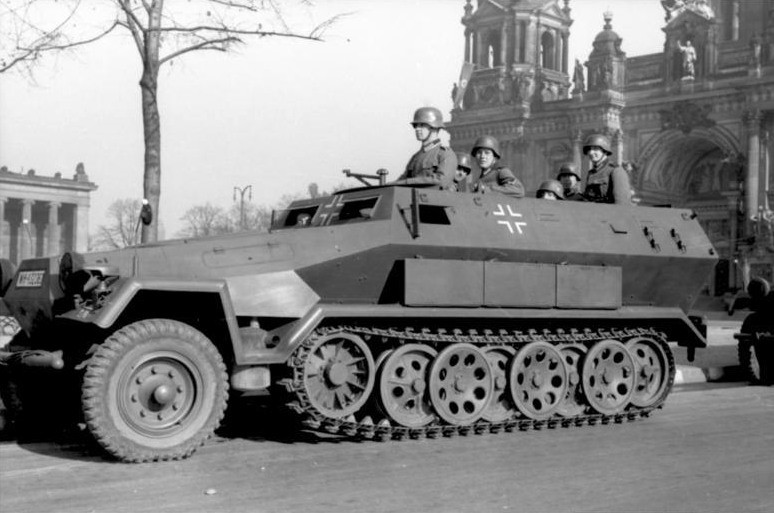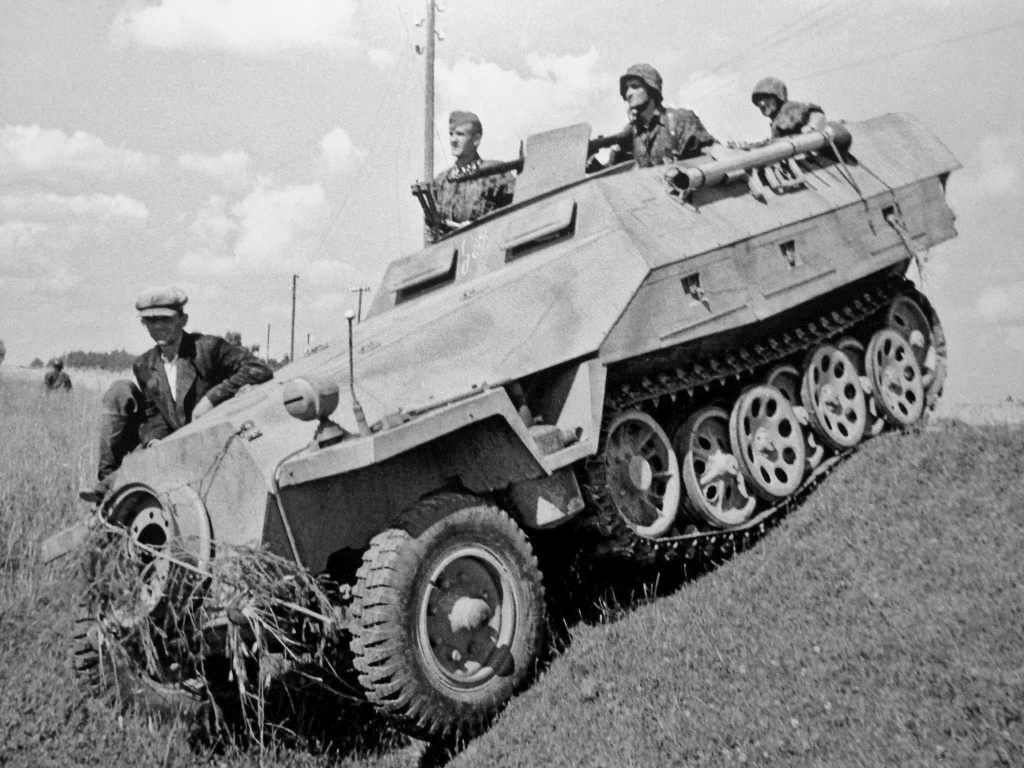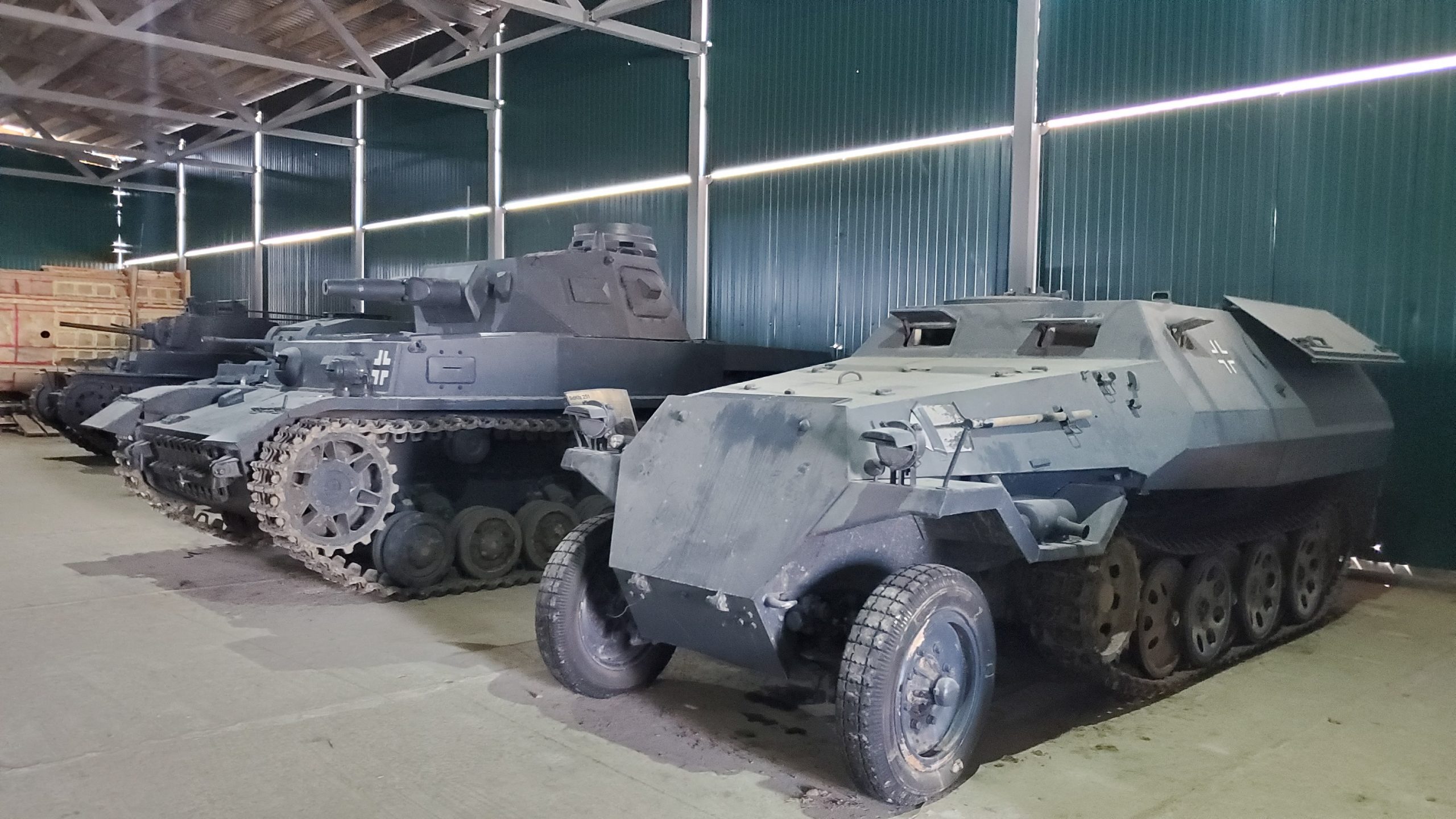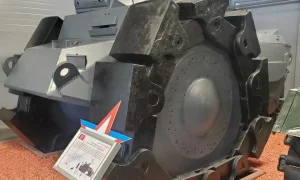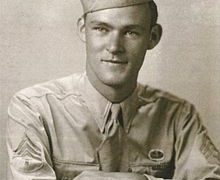Sd.Kfz.251 – Sonderkraftfahrzeug 251
German medium half-track armored personnel carrier during the Second World War.
Created by Hanomag in 1938 on the basis of the Sd.Kfz artillery tractor. 11 and was mass-produced from June 1939 to March 1945. During World War II, Sd.Kfz. 251 along with the light Sd.Kfz. 250 was the main armored transporter in Germany, and also served as the basis for a whole family of combat vehicles for various purposes.
In terms of the number of copies produced during World War II, it was second only to the American M3 armored personnel carrier. During its course, Sd.Kfz. 251 was supplied in small quantities to the allies of Germany, and in the post-war period its modernized version of the Tatra OT-810 was produced in Czechoslovakia until 1962 at the Podpolyanske strojrne plant in Detva. In the 1980s, it was massively removed from service with the Czechoslovak army, and in 1995 the last copies were removed from storage.
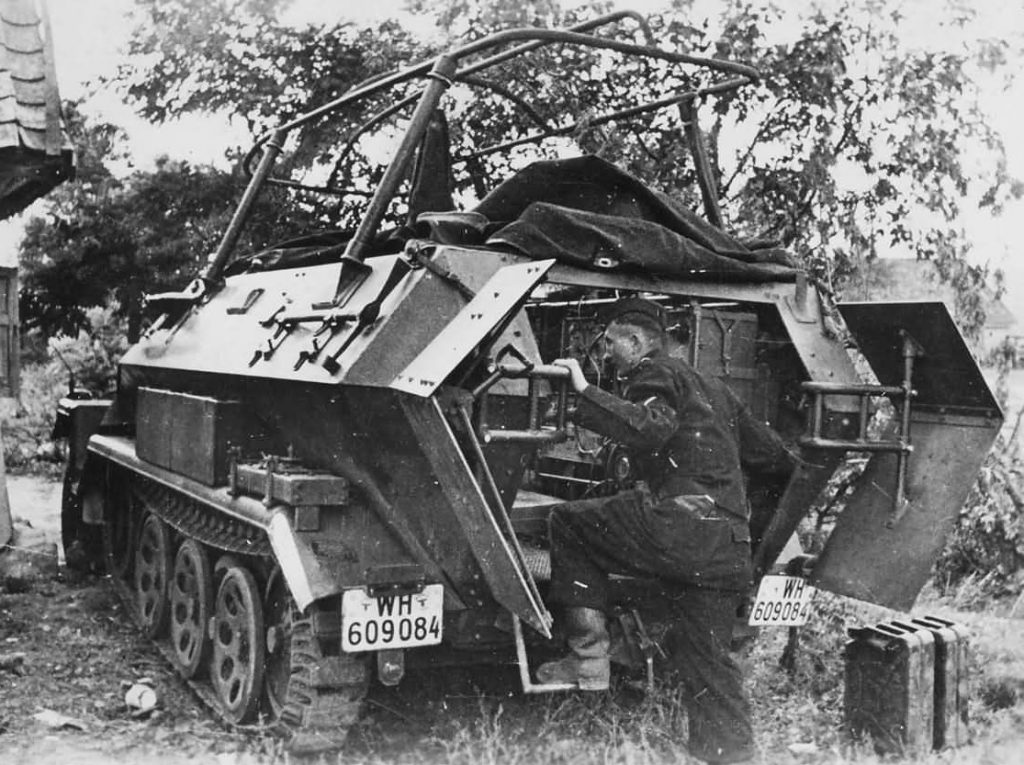
History of creation
During World War II, the German army was the first in the world to massively adopt armored personnel carriers and used them very effectively, forcing the Allies to develop similar vehicles, and then adopt the tactics of their use. The main armored personnel carrier used by the Germans was the half-track Sd.Kfz. 251, usually called “Hanomag” (after the name of the manufacturer). It was used to transport infantry ( motorized infantry ) and heavy weapons ( mortars, large-caliber machine guns, cannons, flamethrowers and rocket launchers ); ambulances, command vehicles and communication vehicles were created on its basis…. Armored personnel carriers were in service with the German army throughout the Second World War and were used in all theaters of war. After the war, a modification of the Sd.Kfz. 251 – OT 810 was in service with the Czechoslovak army.
The distant ancestor of Sd.Kfz. 251 was a half-track truck company Daimler. This truck, made by the Germans for Portugal, was fitted with rubber bands connecting the drive wheels to an additional pair of idler wheels. Such a primitive track allowed the car to move confidently on soft ground.
In 1915-1916, the next models of half-tracked vehicles appeared – “Bremenvagen” and “Marinevagen” I and II. These vehicles were in service with the Sturm-Panzerkraftwagen-Abteilung (assault armored vehicle battalion). In 1917, Benz introduced the Kraftprotze half-track artillery tractor, of which 42 were subsequently produced. In 1919, one such vehicle was booked and handed over to the police. During the Weimar Republic, work on new designs for half-track vehicles continued.
On the basis of the chassis of a standard 3-ton artillery tractor, Rheinmetall-Borzig has developed a fully armored tracked vehicle armed with a 37 mm 37 mm KwK L / 70 cannon placed in the turret. Auxiliary armament was a 7.92 mm MG 34 machine gun paired with a cannon, the same machine gun could be installed on an anti-aircraft turret on the turret of the vehicle.
In July 1934, the first prototype of the semi-tracked artillery tractor, designated HK 600p, was completed. The tractor was driven by a 68 kW / 92 hp Borgward KJ54 engine. with. In 1934, the tractor was renamed HL KI 2, and in the spring of 1936 its mass production began. The first vehicles were sent to the 23rd Light Artillery Regiment. A total of 505 such tractors were produced.
In the second half of the thirties, the first half-track armored personnel carriers appeared. The most famous of them – HI6 – was developed by the Hamburg firm ” Hansa-Lloyd “. In 1936, the license for this car was bought by the Hanoverian company ” Hanomag “. The armored personnel carrier was developed on the basis of the 3-ton semi-tracked artillery tractor mentioned above. The chassis of the armored personnel carrier was manufactured at the company “Hanomag”, the armored hull at the company ” Bussing ” in Berlin-Obershöneweid, and the final assembly was carried out at other enterprises.
The first vehicles, designated HKL 6p, were produced in 1937, and zero-series armored personnel carriers in 1938. The name of the armored vehicle sounded like this – “mitteler gepanzert Mannschaftstransportwagen” (MTW) - that is, a medium armored vehicle. The first production samples of the Sd.Kfz. 251 entered the unit in the summer of 1939.
Armored personnel carriers Sd.Kfz. 251 were produced in four versions – Ausf. A, B, C and D, and in 23 specialized versions, differing from each other in weapons and equipment. The options were numbered, for example Sd.Kfz. 251/3 or Sd.Kfz. 251/16. It should be especially noted that a specialized version of the armored personnel carrier could belong to any of the four modifications, for example, Sd.Kfz. 251/3 was produced on the basis of the Ausf. A and Ausf. D. What modification was used to build a specialized version can, in principle, be established only by the year of release of a particular instance.
